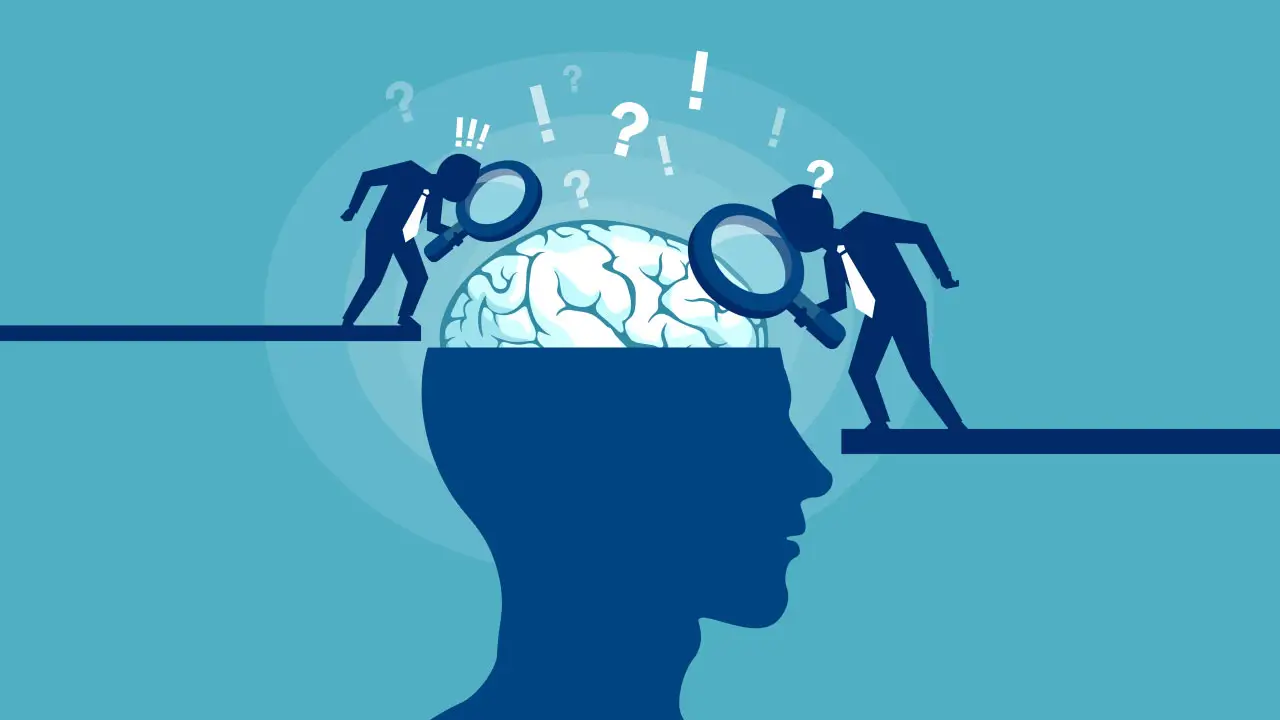Our bodies are constantly changing, adapting, and responding to our environments. This process is not only influenced by our physical surroundings, but also by the way we think, feel, and experience life. The brain is at the center of this process, constantly rewiring itself based on our experiences. This ability, known as neuroplasticity, plays a crucial role in how we respond to stress, trauma, and even chronic pain. However, when neuroplastic changes are influenced by stress or unresolved emotional trauma, they can result in physical symptoms that may seem unrelated to the original cause.
At Sky Therapies, we understand the deep connection between the mind and body and how neuroplastic symptoms in the body can emerge as a result of emotional and psychological experiences. In this blog post, we’ll explore how neuroplasticity affects the body, what neuroplastic symptoms are, and how therapies like Deep Brain Reorienting (DBR), EMDR, Brainspotting, and other mind-body approaches can help address the root causes of physical symptoms related to emotional distress.
What is Neuroplasticity?
Neuroplasticity is the brain’s remarkable ability to reorganize itself by forming new neural connections throughout life. It allows the brain to adapt to new information, experiences, and environments. Neuroplasticity is essential for learning, memory, and recovery from brain injuries. It also plays a role in how we respond to stress, trauma, and pain.
While neuroplasticity is often viewed positively in terms of brain recovery and cognitive improvements, it can also work in ways that are not beneficial. When the brain is exposed to chronic stress, trauma, or overwhelming emotions, it can begin to “rewire” itself in response to these negative experiences, leading to the development of physical symptoms. This is where neuroplastic symptoms in the body come into play.
What Are Neuroplastic Symptoms?
Neuroplastic symptoms occur when changes in the brain’s wiring cause physical responses in the body. These symptoms are often the result of emotional distress, trauma, or prolonged stress that the brain internalizes and processes in ways that affect both mental and physical health. While these symptoms can be distressing, they are not always linked to a specific injury or disease. Instead, they can emerge from the brain’s altered response to past experiences.
Some common neuroplastic symptoms include:
-
Chronic Pain
Chronic pain is one of the most common neuroplastic symptoms. When the brain continuously processes stress, trauma, or emotional discomfort, it can “turn up” the pain signals, even in the absence of physical injury. This is seen in conditions like fibromyalgia, chronic back pain, and headaches, where the brain’s pain centers become overactive, leading to persistent discomfort that may not have a clear physical cause.
-
Tension and Muscle Stiffness
When we experience stress or emotional strain, our bodies often react by tightening muscles, especially in the neck, shoulders, and back. Over time, this can lead to muscle stiffness or chronic tension. The brain may continuously send signals to the body, telling it to stay in a heightened state of alertness, which can lead to physical discomfort and pain.
-
Digestive Issues
Stress and emotional trauma can deeply affect the digestive system. Irritable Bowel Syndrome (IBS), acid reflux, and other digestive issues are common symptoms of neuroplasticity in the body. The brain’s stress response can interfere with normal digestion, causing discomfort, bloating, and irregular bowel movements. Chronic emotional stress can rewire the brain’s response to the gut, contributing to long-term gut issues.
-
Fatigue and Sleep Disturbances
Prolonged stress and trauma can also manifest in chronic fatigue and sleep disturbances. The brain’s hyperarousal system (the fight-or-flight response) can become stuck in an active state, making it difficult to relax and get restorative sleep. This can lead to a constant feeling of exhaustion, despite adequate rest.
-
Skin Issues
Stress and emotional turmoil can also affect the skin, causing conditions like eczema, psoriasis, and acne. The brain’s stress response can trigger inflammation, which shows up on the skin in various forms. Skin conditions that appear due to emotional stress can also create a feedback loop, as the emotional distress caused by the skin condition worsens the physical symptoms.
How Stress and Trauma Influence Neuroplastic Symptoms
When the brain is exposed to chronic stress or trauma, it adapts by altering neural connections. These changes are part of the brain’s attempt to help us cope with difficult emotions or experiences. However, when these neural changes are not addressed, they can result in long-lasting physical symptoms. The brain’s fear-based pathways and fight-or-flight responses can become overactive, creating a persistent state of tension and discomfort in the body.
Some common emotional triggers that contribute to neuroplastic symptoms include:
-
Childhood Trauma
Traumatic experiences in childhood can lead to significant neuroplastic changes in the brain. These early experiences can influence how the brain processes stress, danger, and emotional regulation throughout life. As a result, individuals who experienced childhood trauma may develop chronic pain, digestive issues, or other physical symptoms later in life, even if the original trauma occurred years ago.
-
Chronic Stress
Ongoing stress from work, relationships, or financial pressures can cause the brain’s stress response system to become dysregulated. This constant state of hyperarousal can lead to physical symptoms such as muscle tension, headaches, digestive problems, and sleep disturbances. The more stress the brain processes, the more the body reacts with neuroplastic symptoms.
-
Unresolved Emotional Pain
Emotions that are not processed and released can become “stuck” in the body, leading to neuroplastic symptoms. Unresolved grief, anger, and anxiety can manifest as chronic pain, fatigue, or other physical ailments. The brain’s response to emotional pain can create a physical experience that is challenging to overcome without addressing the underlying emotional root.
How Therapy Can Help Address Neuroplastic Symptoms
At Sky Therapies, we focus on helping individuals address the root causes of neuroplastic symptoms using a variety of therapeutic approaches. Our goal is to help you break the cycle of stress and emotional pain that contributes to physical discomfort.
-
Deep Brain Reorienting (DBR)
DBR is an effective therapy for reprogramming the brain’s response to stress and trauma. By targeting the neural pathways that are responsible for chronic pain and emotional distress, DBR helps reset the brain’s response system. This approach allows individuals to release trauma-related pain and regain control over their physical and emotional well-being.
-
EMDR (Eye Movement Desensitization and Reprocessing)
EMDR helps individuals process traumatic memories and emotional pain, allowing the brain to “re-wire” its response to these experiences. By using bilateral stimulation, EMDR promotes the integration of traumatic memories, reducing their emotional charge and helping individuals experience relief from neuroplastic symptoms such as chronic pain and anxiety.
-
Brainspotting
Brainspotting is another powerful technique that helps individuals access and process deeply stored trauma. By identifying specific “spots” in the brain that are related to unresolved emotional pain, Brainspotting allows individuals to release these painful memories and the physical symptoms associated with them. This therapy is particularly useful for addressing chronic pain that is rooted in emotional experiences.
-
Mind-Body Therapies
Mind-body therapies, such as somatic experiencing, breathwork, and guided imagery, help individuals reconnect with their bodies and release stored emotions. By using techniques that encourage physical awareness and relaxation, mind-body therapies help the nervous system return to a state of balance, reducing the physical symptoms associated with emotional distress.
-
Pain Reprocessing Therapy
Pain Reprocessing Therapy (PRT) is a specialized approach that helps individuals reframe their experience of pain. By addressing the psychological and emotional factors that contribute to chronic pain, PRT helps “retrain” the brain to process pain in a healthier way. This therapy can be highly effective for individuals who experience pain without a clear physical cause.
Conclusion
Neuroplastic symptoms in the body can be a frustrating and perplexing experience, but it’s important to remember that these symptoms are not your fault. They are a result of the brain’s adaptive responses to stress, trauma, and emotional pain. With the right therapy and support, it is possible to break the cycle of chronic pain and discomfort and restore balance to both the body and the mind.
At Sky Therapies, we offer a variety of treatments, including DBR, EMDR, Brainspotting, Pain Reprocessing Therapy, and Mind-Body Approaches, to help individuals address the emotional and psychological roots of their physical symptoms. If you are struggling with neuroplastic symptoms, we are here to help guide you on your path to healing and recovery.
Contact Sky Therapies today to learn more about how we can support you in addressing the mind-body connection and finding relief from neuroplastic symptoms.





